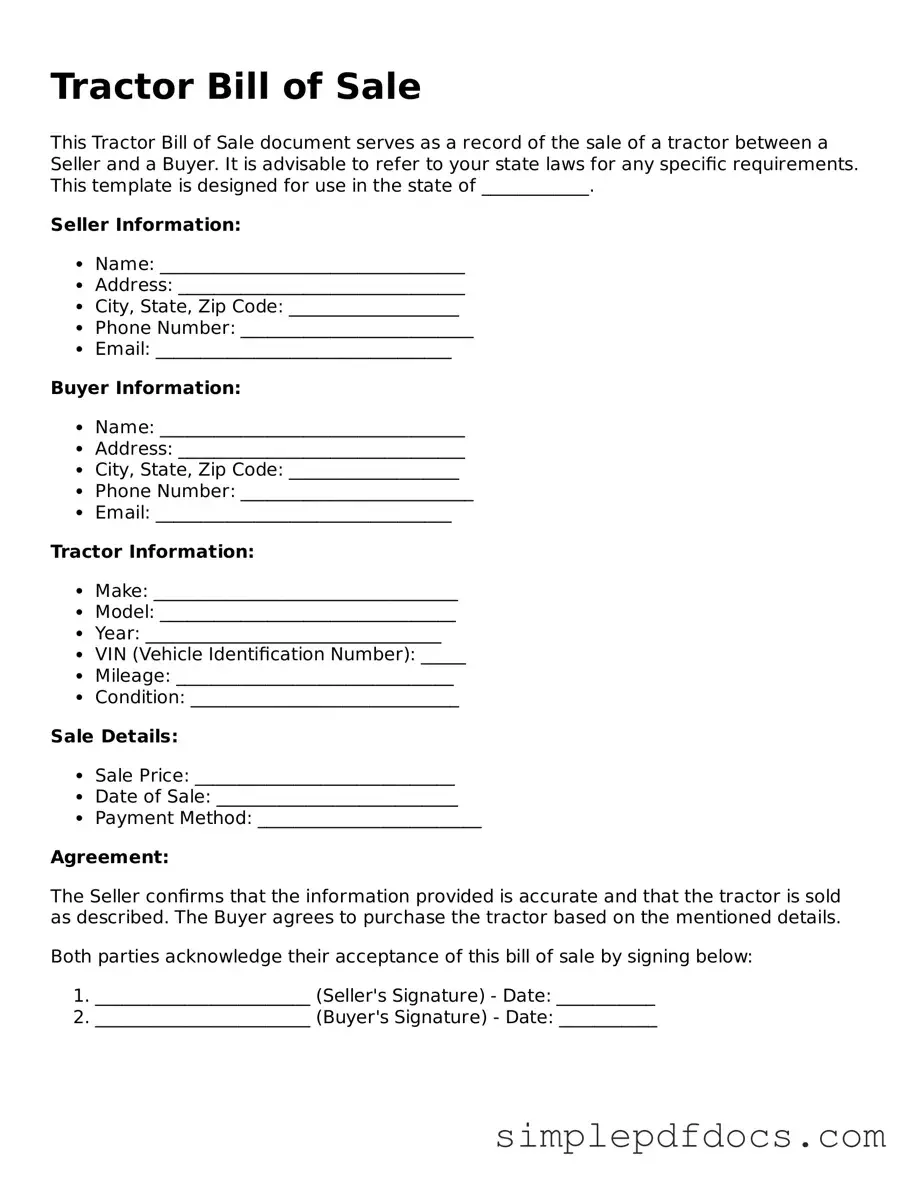Attorney-Approved Tractor Bill of Sale Form
The Tractor Bill of Sale form serves as a legal document that records the transfer of ownership of a tractor from one party to another. This form outlines essential details such as the buyer's and seller's information, the tractor's description, and the sale price. Properly completing this document ensures clarity and protection for both parties involved in the transaction.
Get Document Here
